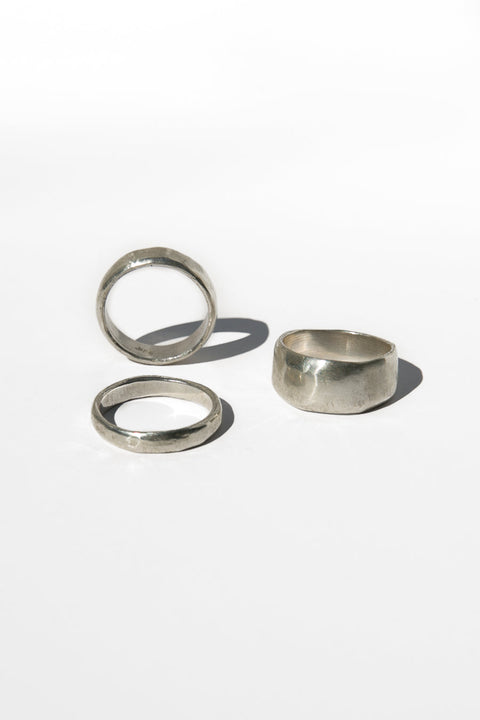
History of Silver
Where the history of gold mining in America ends, the history of silver mining begins in Nevada, with the discovery of the Comstock Lode in 1850. A group of Mormon emigrants en route to California to strike for gold were camping out along the Carson River, where they did some prospecting and uncovering of gold, and the area was soon marked for future gold mining — A more permanent settlement was established in the area between 1852-1853.

[representation of the Comstock infrastructure]
Henry Tomkins Paige Comstock, also known as “Old Pancake”, was led by gold-seeking brothers Ethan Allen and Hosea Ballou Grosh to a claim of ore that would become the Comstock Lode in 1859. A group of miners along with Comstock are credited with the “rediscovery” of the Grosh brother’s claim that was staked by Comstock after the passing of Ethan Allen Grosh. The group’s discovery of ore sparked the “Rush to Washoe” in Nevada. The original group of miners soon realized they lacked the resources to mine on a larger scale, and without the knowledge of the scale of the deposits, soon sold off their claims to other entrepreneurs. Henry Comstock left Nevada without a fortune, for Oregon in 1862, eventually settling in Montana where he ended his own life in 1870. The discovery was named in his honor.
The Comstock Lode was a collection of mines located at Comstock’s stake in Nevada. A massive structure of wood framing was set into the earth where the Lode was discovered so Miners could follow veins of ore and gold underground to uncover “bonanzas”, or large deposits of gold. Mills were constructed above the Lode to process ore and silver, and the massive amounts of ore kept the surrounding area in growth.
Boomtowns grew up out of the rush for silver in western Nevada. Mining camps became towns, towns became cities, with highly influential Virginia City becoming the “capital” of the Comstock Lode. Mining corporations went toe to toe in their claims for ore among unclear mining boundaries. Eventually, common miners became obsolete, as more efficient mining technology reached Nevada. The rush for silver brought in as many different backgrounds as the panic for gold did, with various European immigrants, Canadians, and Chinese immigrants coming to the region in pursuit of opportunity. There was little known class hierarchy of American Nevadans at the time, and those of European descent had little trouble rising up to “noble” status, but Chinese immigrants in particular were extremely prejudiced. Women in the area were marginalized, to put it lightly, performing any job they could to survive.

[miners from the Chollar Mine in Virginia City]
San Francisco-based Bank of California absorbed smaller banks in the area and took control of Virginia City’s claims on the Comstock lode when the market declined. They built rail lines as part of the Central Pacific Railroad through the city, and took control of the water industry, with the creation of the Virginia City and Gold Hill Water Company.
Irishman John William MacKay was one man that the Bank of California could not buy out. MacKay and his business partners James Graham Fair, James C. Flood, and William S. O’Brien controlled silver mines on the Comstock Lode — including the richest deposit of ore in the entire Lode, known as the “Big Bonanza.” Over the years, MacKay’s group produced 400 million dollars in silver ore, which was half of the country’s silver stock, declining in the late 1870s.

[Virginia City, Nevada circa 1878]
By 1880, the Comstock Lode was played out, and almost all of Nevada’s mines were in decline. Over 700 million dollars in gold and silver were extracted from the Comstock Lode. At the height of the Lode’s booming, around 25,000 people were brought to Nevada, falling sharply to less than 4,000 by the year 1900. By that time, mining companies were all but gone from Nevada, and empty mines filled the “Silver State.” The entire process left a small group of men wealthy, with most of the mining companies in the area losing money, and a general loss to common shareholders with the valuation of silver declining.
The Comstock Lode’s role in the history of gold and silver mining in the United States can’t be ignored, as it led to major developments in mining extraction and processing technology, and the general collection of precious ore that we continue to use for making jewelry.
Bloedstone owes itself to the rich history silver has in the West. Growing up in the Sierra Nevadas and living off of box sets of the Lone Ranger, silver carried with it such a rich history. It's a metal that though precious, can offer itself to the wear and tear of a hard days work and come away better than before. We can't wait to make a silver signet or band for you. Being imbued with its rich history, it's the perfect piece to go on and create more history in your life and the lives of generations to come.
Piece written by Daniel Rockburn
